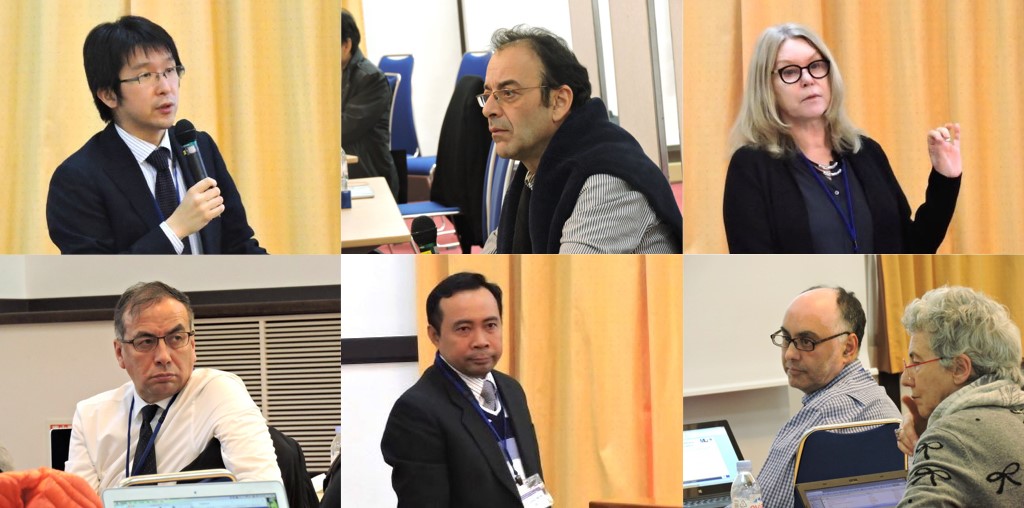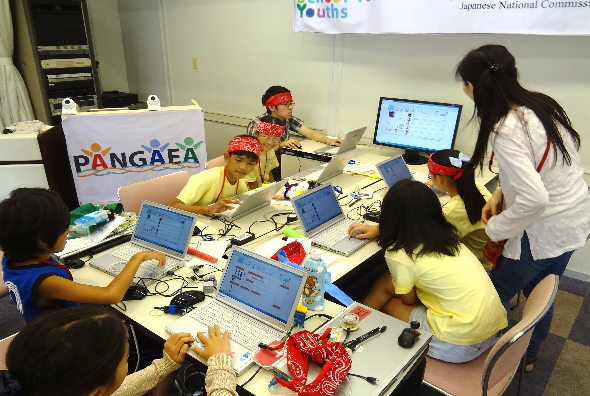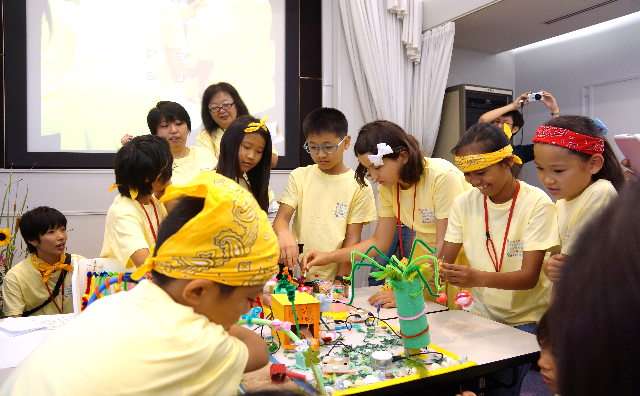Contents
[The Language Grid Technical Letter(serialization): (1st edition) A convenient way to invoke language services by Groovy]
![]()
[The Language Grid was used for translating the abstract of theses at ACM CHI 2015]
![]()
[WLSI2015 Workshop Report]
![]()
[Best Paper Award of SETECEC 2015]
![]()
[Language Grid Project Introduction: KISSY 2014]
![]()
[Language Grid User Introduction (the 33rd): Nakajima Lab., Toho University]
![]()
[Periodic Maintenance: July 14th 2015, August 11th 2015 and September 8th 2015]
![]()
The Language Grid Technical Letter(1st edition): A convenient way to invoke language services by Groovy
From this newsletter, we have started a serial to introduce the technology of the Language Grid.
Though we use various technologies within the Language Grid, we will choose technology that deals with the user side and we will introduce technologies that are especially useful for developing services and applications. To begin with, we will introduce service invocation.
In order to invoke the services on Language Grid, what do you prepare and how many lines do you have to write? In simplest case, it is very easy. Let’s look at the actual code to invoke translation services:
-
-- call.groovy --
@Grab('net.servicegrid:jp.go.nict.langrid.client.soap:1.0.5')
@Grab('net.servicegrid:jp.go.nict.langrid.service.language_1_2:1.0.5')
import jp.go.nict.langrid.client.soap.SoapClientFactory
import jp.go.nict.langrid.service_1_2.translation.TranslationService
println new SoapClientFactory().create(
TranslationService.class,
new URL("http://langrid.org/service_manager/invoker/KyotoUJServer"),
"yourid",
"yourpass").translate("en", "ja", "hello")
----
Please replace “yourid” and “yourpass” with your Language Grid ID and password.
This is the code of Groovy programming language and it invokes JServer translation service on Language Grid. Download and install Java(*1) and Groovy(*2), then run following command
(replace ${groovy_home} by the directory you extract groovy):
-
${groovy_home}/bin/groovy call.groovy
Libraries needed to run will be downloaded automatically, JServer will be invoked and“hello” will be translated and displayed.
That is easier than you imagine, isn’t that? Of course some part of these functions are realized by Groovy itself and the Language Grid project also did some preparation. We will describe the details about these preparations in following articles.
-
*1http://www.oracle.com/technetwork/java/javase/downloads/index.html
*2http://www.groovy-lang.org/index.html
The Language Grid was used for translating the abstract of theses at ACM CHI 2015
At the ACM CHI 2015 held in Soul, Korea from April 18th to 23rd, 2015, they used the Language Grid to create multilingual versions for the abstracts of theses. This translation project started by Naomi Yamashita (Chief Researcher of NTT Communication Science Laboratory and Translation Co-Chair of CHI 2015), who is an alumnus of the Language Grid Project, and translated 486 theses from English to Chinese, Korean and Japanese by using Language Grid Toolbox, in which they registered technical terms beforehand. The translated abstracts were provided to 3000 participants through the web site of ACM CHI 2015.
WLSI2015 Workshop Report
The Second International Workshop on Worldwide Language Service Infrastructure was held in Kyoto University, from January 22nd to 23rd in 2015. This workshop aims to construct a worldwide and interoperable language service infrastructure. Toward this purpose, the workshop had 15 research presentations related to interoperability of services, service management, and applications using language services. Moreover, representatives of European and American leading projects for language service platforms, such as META-SHARE, LAPPS Grid, PANACEA, MLi as well as the Language Grid gave their invited talks and discussed mutual connection between their platforms and international cooperation among projects.

As a result, they agreed with connecting LAPPS Grid by Linguistic Data Consortium (LDC), ELRA Language Grid by European Language Resources Association (ELRA), and Open Language Grid in Asia and starting their federated operation in October 2015. This federation enables users to access 111 language services registered in LAPPS Grid, 708 language resources belonging to LDC, and 1129 language resources belonging to ELRA. In the future, the Language Grid project will support them with the deployment of the service grid server software and conduct the trial operation.
Best Paper Award of SETECEC 2015
The research of multilingual gaming simulation with the Language Grid, conducted by Mr. Taishi Nose and Prof. Reiko Hishiyama of Waseda University, received the “Best Paper Award” in the Fourth International Conference on Software and Emerging Technologies for Education, Culture, Entertainment, and Commerce (SETECEC 2015). Congratulations to Mr. Taishi Nose and Prof. Reiko Hishiyama of Waseda University!
-
Paper Information: Taishi Nose, Reiko Hishiyama. Analysis of Context Protocols by Conversation Tagging in Multilingual Gaming Simulation, Fourth International Conference on Software and Emerging Technologies for Education, Culture, Entertainment, and Commerce (SETECEC 2015), Venice, Italy, March 11-13, 2015.
Language Grid Project Introduction: KISSY 2014
The first Kyoto Intercultural Summer School for Youths (called KISSY) was held by NPO Pangaea during July 31st to August 5th 2014. In this event, youths in the world cooperated with each other and created artwork by using IT technology with the aim of getting over the difference of language or culture and collaborating each other. The main activity of this event was to hold a workshop where the youths from 4 countries (Kenya, Cambodia, Korea, and Japan) work together during six days and five nights.
This event was cosponsored by NPO Pangaea and Ishida-Matsubara Laboratory and employs the multilingual system consists of chat and BBS using Language Grid. The workshop was conducted during August 1st to 4th. The youths created an artwork in groups of three or four for the first three days. Then, each group made a presentation on their artwork on the last day. A member of Ishida-Matsubara laboratory has been analyzing the activity log of youths e.g., chat log, BBS log, video data, and interview data, to extract the features or problems of multi-language communication among youths.
Since the first KISSY received good reviews from its participants, the second KISSY is scheduled for July 31st to August 7th 2015.


whose language and culture are different
Language Grid User Introduction (the 33rd): Nakajima Lab., Toho University

Nakajima Laboratory (Department of Information Science, Toho University) is researching multiagent based simulation, which is aimed at simulating human behavior on a computer.
With regards to the relationship between this laboratory and Language Grid, this laboratory has previously participated in YMC-Viet Project, introduced in newsletter no. 31. This project was aimed at proving the YMC Model (Youth Mediated Communication Model) successful in Vietnam. The rich knowledge of the Japanese rice-growing agriculture was translated into Vietnamese by using language resources on the Web and with the support of volunteers, which was conveyed to rice farmers' children in Vietnam.
This laboratory is developing a system called MAGCruis which simulates activities with multi-language communications. Our recent research focuses on methods of efficient translation by volunteers and methods of increasing volunteers' motivation with proper feedback. (Yuu NAKAJIMA, Toho University)
Periodic Maintenance
Periodic maintenance will be carried out as below. If you wish to use the Language Grid during this period, please contact us in advance at operation [at] langrid.org.
-
‐July 14th, Tuesday/ from 16:00 to 20:00(JST)
‐August 11th, Tuesday/ from 16:00 to 20:00(JST)
‐September 8th, Tuesday/ from 16:00 to 20:00(JST)
Periodic maintenance will be carried out on the second Tuesday of every month from 16:00 to 20:00 (JST).
Please refer to the Language Grid portal sites at: http://langrid.org/en/.
